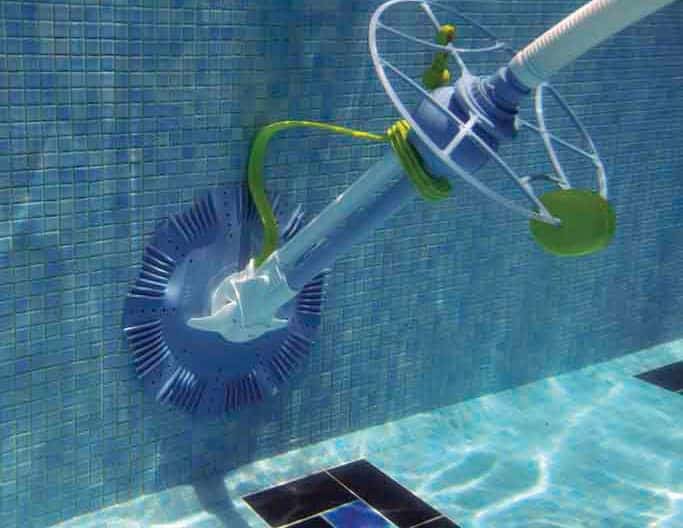Stainless steel and its application
EXPERIENCE IN EXAMINATION AND MONITORING HANDLING POOL
Experience shows that the pool is treated and taken care of regularly will help protect the health of swimmers, the pool is clean and free of suspended particles, cool blue water. For the most effective treatment of swimming pools, you can use TCCA 200gam tablets, powdered TCCA (in case of urgent handling) and 70% Chlorine Nippon of Japan to ensure the quality as well as the content.
INSTRUCTIONS FOR INSPECTION AND SUPERVISION OF SWIMMING POOL
I/ Maintenance and cleaning of the pool:
Pools used daily need to check the concentration of CLO and PH standards in the tank before use. Check daily 2 times a day in the morning to see if the CLO and PH in the lake water is enough to maintain throughout the day or not, and in the evening to see how much the CLO and PH in the tank water evaporates in 1 days to calculate the dose increase.
Daily cleaning of the pool is also important to prevent the growth of moss. Use the tools to clean and scrub the walls of the tank to remove any residue from the walls.

For the pool system using technology of overflow, we should check and regularly clean the balance tank because of the garbage and sediments that have been deposited in the tunnel for a long time making the filtration system ineffective.
Sand filter used to wash sand (Backwash) when the clock pressure is high to ensure efficient use. And sand and gravel should be replaced after 2-4 years or when the filtration system is no longer effective.
II/ Specialized chemicals for swimming pool treatment:
– Using chemicals to treat swimming pool water, things need to be considered is that after chemical treatment, it is required to wait for 3-6 hours to use the pool. Dealing with different chemicals must be separated by a period of 2-4 hours because it takes time for the chemicals to diffuse in water and avoid chemicals reacting with each other to reduce the effectiveness of chemicals. substance.
– Ensuring labor safety for chemical handling workers (Chemical handling staff must wear labor protection devices such as gloves, masks, glasses …)
Water treatment chemicals used in swimming pool water treatment include:
1. Chlorine Nippon 70% – Japan
– Uses: The main use of Chlorine Nippon 70% is to make in swimming pool water, kill bacteria, kill germs, prevent algae. Chlorine Nippon 70% also has the side effect of lowering the pH, so before removing CHLORINE we must check the pH 7.2-7.6, if the PH concentration in water is lower than 6.8, it will reduce the concentration efficiency of CHLORINE because the high concentration of acid in water in water attract oxigen in water reduces the effects of chlorine.
– Using: Use daily maintenance dose of 2g-3g / 1m3 of water for normal tank conditions. The number of guests taking a winter bath, strong hot tub, hot weather and strong wind use the highest amount.
– Using high doses for lakes with too low chlorine, chlorine treatment lake for the first time or a large area (CHORINE volatility 0.0-3.0 / 1 day) then we multiply 1.5-3 times.
2. Soda
– Uses: Increases pH concentration.
– Using: 1 – 3 Kg / 100m3 / time. Dissolve with water widely around the lake surface, if handling large quantities, it must be divided in small quantities many times to avoid water shock causing turbidity, If there is a balanced tunnel, then put directly into the tunnel as much as it will through the system. filter system. After 6 hours for guests to bathe.
3. Acid HCL (32%)
– Uses: Reduce PH concentration, use together with Chlorine Nippon 70% – Japan
– Using: 1 – 4 lit/ 100m3/ time. Dissolve a small amount with water around the surface of the lake. After 3-6h for guests to bathe.
4. Polyaluminium chloride PAC
– Using: Sediment pool.
– Using: 2kg/ 100m3/ time. Before use, it is necessary to raise PH and CLO to the standard level and turn off the filtration system to make the water quiet. Dissolve a small amount of water with water around the lake. After 6 hours, the sediment will be deposited to the bottom by a layer of membrane, then use a suction table to remove.
Measure chlorine pH in water: To measure the pH of chlorine in water, we can use an electronic measuring device or color indicator to make sure the water in the tank has enough chlorine content and reaches a safe pH of 7.0-7.4.
Pool water must be filtered prior to sampling and test water samples should be collected at a depth of about 45cm below the water surface. Collect a pool of test water in a pool in the water test box with the top line. Then add 6 drops of Chlorine reagent to the sample of water, shake and wait for the medicine to dissolve. If the water color in the test tube is equivalent to the standard color in the IDEAL range, the amount of Chlorine is sufficient. If the line is below IDEAL, add Chlorine to the tank, if higher, stop adding 1 day after chlorine.
III/ Resovle problem:
Swimming pool in the event of an incident is undesirable, so it should be handled patiently and properly because the processing takes time so the prevention of incidents is the right thing to do. The pH in water is very important to the tank because it is it is because of human resistance. Pool water when having trouble is caused by the amount of moss, algae, scum, impurities, groundwater or chemicals cause.
1. The common phenomenon:
– The water in the tank is opaque with rice water color: Check CLO and PH for good or not, if CLO or PH is high due to uneven diffusion or high content in tank water. Treatment by operating a high-power filtration system.
– Lake green, mossy green: Check CLO and PH to see if it is good, if it is low due to the high presence of algae and scum in the water. Treatment by raising the CLO in the water to the highest level, we can use more ATRINE to increase the efficiency of operating high-capacity filtration systems.
– Lake water is black, silver, translucent: Check CLO and PH low then raise to the standard level and run the filter if it is stable and then it has to review the filtration system, the balance cell … Specifically can be sand filter, because the amount of sand and gravel is lost due to washing, so the filtration efficiency is not high, this time should replace sand and gravel.
– Lake water has the color of tea or pale red brick: CLO and pH are stable, normal measurement results and this problem are often repeated, must check water source, high hardness water when using CLO will cause this color. The source of water added to the lake must stabilize the pH and check the alum, hardness in tap water is also a big reason for the problem, this phenomenon is handled by METAL AWAY and then run the filter at full capacity.
